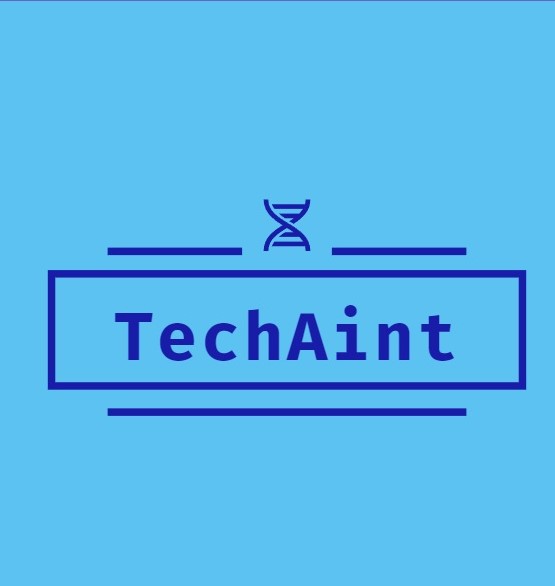A new battle is looming over Ethereum – As everyone knows, the Ethereum network is about to change its mode of consensus. This will go from Proof of Work (ETH 1.0) to Proof of Stake (ETH 2.0). Although supported by a majority of developers and by the community, this transition does not help the affairs of minors. So much so that the latter are beginning to consider the possibility of a fork of Ethereum which would retain the Proof of Work.
Proof Of Work Vs Proof Of Stake: A Debate As Old As Ethereum
Launched in 2015, the first version of the Ethereum network opted for Proof of Work to ensure consensus. Indeed, at that time, POW was the consensus mode used by the majority of cryptocurrencies.
Behind this choice, we find both technical and economic justifications. Initially, the Proof of Work was then the best understood and mastered the method. Therefore, its implementation was easier compared to that of Proof of Stake. This was then only used by a small number of cryptocurrencies.
In addition, the launch of Ethereum in Proof of Work made it possible to limit the risk of attack on the network.
Indeed, the Proof of Stake consists of sealing tokens to help secure the chain. As a reward, the validators get the newly issued tokens, in this case, ETH. However, if a validator were to hold more than 2/3 of the network’s ETH, it would then find itself in a majority position. It would in fact concentrate the majority of the newly created ETH, allowing it to increase its monopoly on the network. A vicious circle that would prevent anyone from coming to undermine its monopoly.
As a result, in the early days of the network, the Proof of Work made it possible to avoid this type of monopoly. This has resulted in better management of ETH allocation.
Nevertheless, Proof of Stake has always been one of the goals of the Ethereum network through ETH 2.0. Indeed, the technical limits of Proof of Work were quickly understood. This only allows a limited number of transactions per second and would not manage, in a sustainable way, the growing flow of interactions on Ethereum.
Proof Of Stake And Eth 2.0: Further Behind Than Tthe SNCF
During early discussions, developers were considering ETH 2.0 as well as a switch to Proof of Stake in 2016. Six years later, it’s 2022 and Ethereum still hasn’t made the transition.
Indeed, the deployment of Proof of Stake has been postponed countless times. As Ethereum co-founder Vitalik Buterin pointed out, the technical challenge was much greater than initially imagined. The complexity of the development of the Ethereum Proof of Stake had then been largely underestimated.
However, since December 1, 2020, and the launch of the beacon chain, hope is reborn. Indeed, the beacon chain is a blockchain evolving in parallel with Ethereum. Its sole mission is to maintain consensus in Proof of Stake.
Subsequently, the developers came up with the transition mechanism to move Ethereum from Proof of Work to Proof of Stake, via The Merge. In practice, this update aims to connect the Ethereum execution layer to the Proof of Stake consensus layer, namely the beacon chain.

After many months of work, the developers are now considering a transition to Proof of Stake. The date of September 15 was chosen by them.
Miners: Big Losers Of The Proof Of Stake
Ethereum has been secured by Proof of Work for 7 years. Therefore, many individuals and companies have specialized in securing it, investing millions of dollars in graphics cards, with the aim of participating in the mining process.
With the transition to Proof of Stake, the latter would see their investment become null and void overnight. Indeed, when moving to Proof of Stake, miners will be replaced by validator nodes.
Suffice to say that within the Ethereum community, miners are by far the least enthusiastic about switching consensus mode.
After long months of silence regarding this transition, the miners are waking up. Indeed, the approach of the deadline has opened up new debates.
EthPow: A New Fork Of Ethereum In Anticipation?
Of course, the miners weren’t going to let the developers put them out of business by sitting idly by.
Thus, Chandler Guo, a prominent early miner, now seems to be on the offensive. Indeed, a few years after participating in the fork of Ethereum Classic, which occurred following the DAO hack, it announced that it was ready to repeat the experience.

This announcement had the effect of a bomb in the crypto ecosystem. It generated many debates around the possible creation of a new fork: EthPow.
Thus, this fork would retain the Proof of Work nature of the Ethereum network, not recognizing Ethereum’s move to Proof of Stake.
EthPow Faces The Difficulty Bomb
However, the creation of a new fork of Ethereum, retaining the Proof of Work, will not be without many technical challenges.
Indeed, Ethereum developers have already thought about the possibility of such a fork. To counter this eventuality, the latter has set up a mechanism called a difficulty bomb.
In practice, the difficulty bomb aims to gradually increase the difficulty of mining on Ethereum after its transition to Proof of Stake. The objective is to gradually reduce the profitability of mining. This ensures that it is not economically viable to continue mining the chain in Proof of Work.
Currently, this should start around September 2022, in parallel with the transition to Proof of Stake. However, according to some estimates, it could take more than 6 months before the chain is no longer profitable to mine.
Giving time to miners to find a solution to counter the difficulty bomb. Indeed, the latter will have to find developers to modify the code of Ethereum and its main client Geth to remove all traces of the difficulty bomb.
ETH 2.0 VS ETHPOW: Who Will Be The Big Winner
During this time, the community as well as the decentralized protocol developers will have to choose which chain to support. Obviously, the latter will not wait for the final moment to make their decision and many announcements have already been made.
Indeed, the value of the Ethereum network is not limited to its consensus mechanism. Thus, it is notably via decentralized finance and the plurality of smart contracts developed that Ethereum derives its value.
ETH 2.0: Proof Of Stake As A Big Favorite
After having debated for a long time on social networks, many Internet users have come to one conclusion: the winning channel will be the one that will obtain the support of stablecoins.
Indeed, stablecoins have played a central role in the evolution of Ethereum, particularly through the prism of decentralized finance (DeFi).
ETH 2.0: THE CASE OF STABLECOINS AND DEFI
In the event of a fork, issuers of stablecoins, whether decentralized or centralized, will have to decide. Indeed, the latter will not be able to maintain their stablecoin offer on both channels at the same time.
For example, there are just over 40 billion USDC tokens currently issued on Ethereum. In the event of a fork, Circle the company behind the USDC will not be able to maintain such an amount in circulation on each of the two chains.
Therefore, Circle will have no choice but to choose one of the channels. Thus, on August 9, Joao Reginatto, VP of the product of Circle, announced that the company will provide full and exclusive support to the Ethereum chain in Proof of Stake. A decision shared by its direct competitor Tether and its USDT.
Moreover, Circle is not the only entity to have to make this decision. Indeed, all DeFi protocols will not be able to maintain two versions of their protocol with equivalent liquidity after the fork, this would amount to creating value from nowhere.
As Marc Zeller aptly pointed out in his Twitter thread, if these players choose to join ETHPos, the value of stablecoins and DeFi protocols on EthPow will become zero overnight. Thus, it is a safe bet that the value will be kept by the chain in Proof of Stake.
Centralized Exchange Platform: The Second Decider Of The Future Of Ethereum
Alongside DeFi and stablecoins, the major centralized exchanges will also have a role to play in this battle.
Besides supporting one channel or another, their responsiveness to adding a potential fork to their trading infrastructure could be of major importance.
Thus, reactive support following the fork could give EthPow some respite. Conversely, late support could lead to a massive drop in EthPow’s price on decentralized exchanges and consequently lower its notoriety when added to CEX.
Already A Value For Ethpow?
Obviously, the actors and observers of the ecosystem did not wait for the arrival of a fork to try to assess its value. Thus, the CoinMarketCap site has already published a price curve for ETHW, the potential Proof of Work version of Ethereum.
This is available in the form of an IOU, a sort of estimate of the prices that could be charged. Since the launch of this curve, the ETHW has seen its price fluctuate between $64 and $140.

Source: Coinmarketcap.
And Ethereum Classic In All This?
Eh yes ! There is something to ask the question! Why create a fork of Ethereum in Proof of Work , devoid of everything that makes Ethereum strong, namely DeFi and activity, when it is possible to return to Ethereum Classic , a fork of Ethereum who didn’t plan to go into Proof of Stake anyway .
Indeed, with The Merge approaching, Ethereum Classic has seen a major surge of interest . In practice, the hashrate of the Ethereum Classic network reached a new all-time high at 31.89 Th/s on August 15.

On the market side, Ethereum Classic has also seen positive developments. Thus, the price of the ETC has multiplied by more than 3 since the middle of July, going from 14 to more than 40 $ .
As surprising as it may seem, Vitalik Buterin, the co-founder of Ethereum, has himself announced that it makes more sense to migrate to ETC for “POW-maximalists” rather than creating a fork and a war. fratricide within Ethereum.
I think Ethereum Classic already has a superior community and a superior product for people who have proof-of-work values and preferences.
At the same time, he said he views EthPow dissidents as “a bunch of misfits who own exchanges and mostly want to make a quick buck.
Either way, the next few months will be historic for Ethereum. Between the transition to Proof of Stake and the potential for a fork, the news will be rich for the ecosystem.





Leave a comment